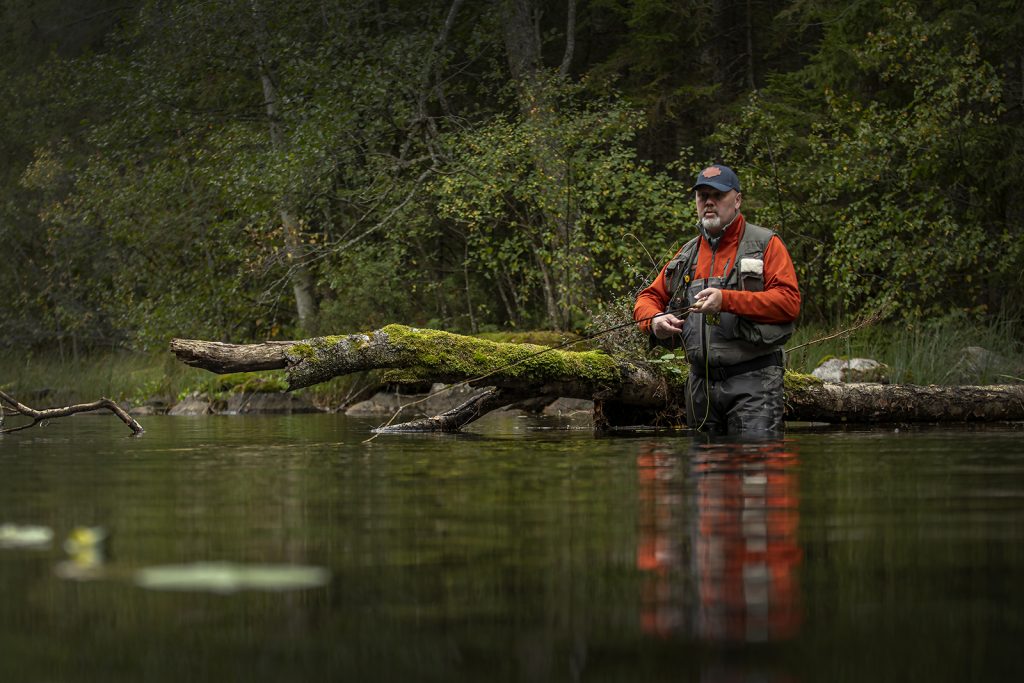
For many, the epitome of fly fishing is a fly fisherman in a river who casts his dry fly and lets it drift slowly with the current until it disappears in a small ring and a nice trout tightens the line. And for many, that’s exactly what fly fishing is. However, many people like nymph fishing, and so you face a number of challenges to get the fly to fish correctly. A floating fly is easy to follow and correct if it behaves unnaturally. A nymph that is fished below the surface is much more difficult to handle, as you cannot follow the fly’s movement in the same way. It is also difficult to know how the current moves below the surface or how the fly is affected by the stream, rocks and deep holes.
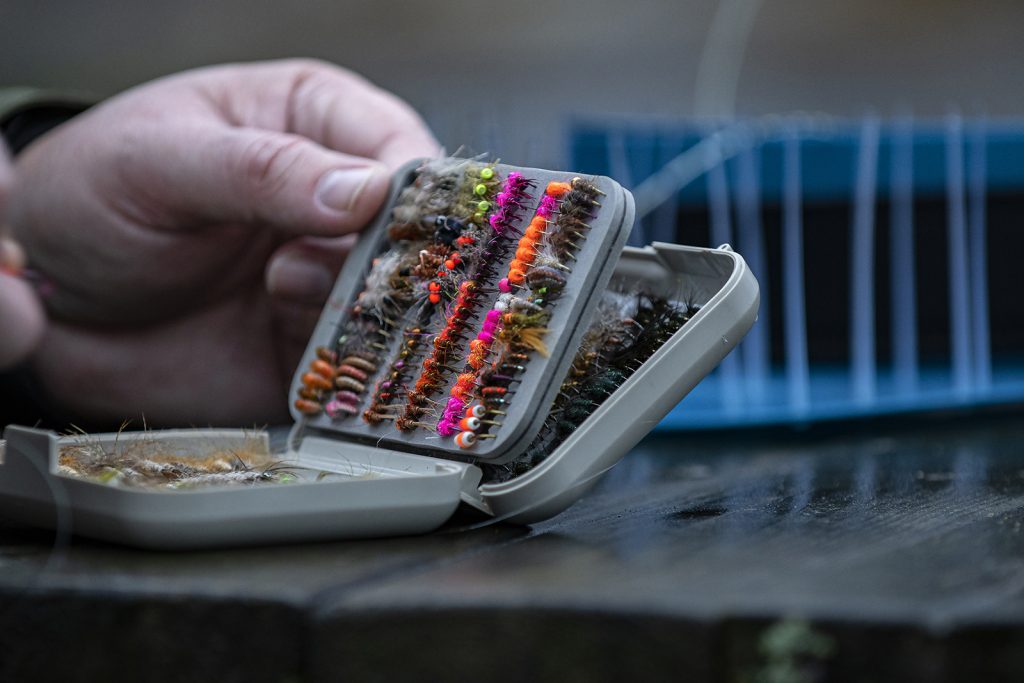
As if this is not enough, it is important to get the fly to fish at the right depth. To get your fly down to the depth you intend to fish in, you can weigh down your fly in different ways and to different degrees. It is possible to mount a metal bead in brass or tungsten onto the hook before tying and thus get the fly down to the desired depth. If you do not want to equip your fly with a distinctive metal bead, you can put the weight under the body of the fly when tying the fly.
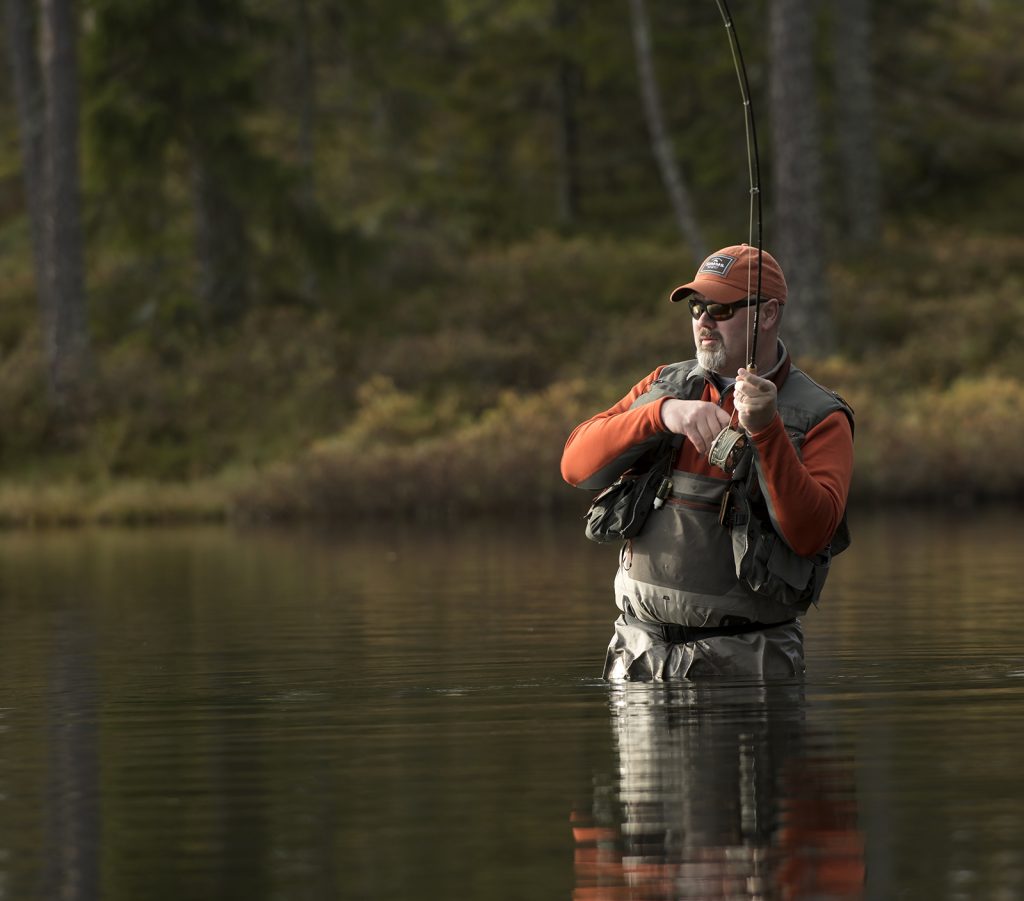
It can sometimes be necessary to have the same pattern in several different degrees of load, which can make it difficult to distinguish the flies from each other. One way to keep the different weights separate is to use different colors on the tying thread, which gives different colors to the head of the fly. Like the nymph in the picture, where the hook shows how much or how little it has been weighed down and then the fly has been given a special color code with the tying thread.
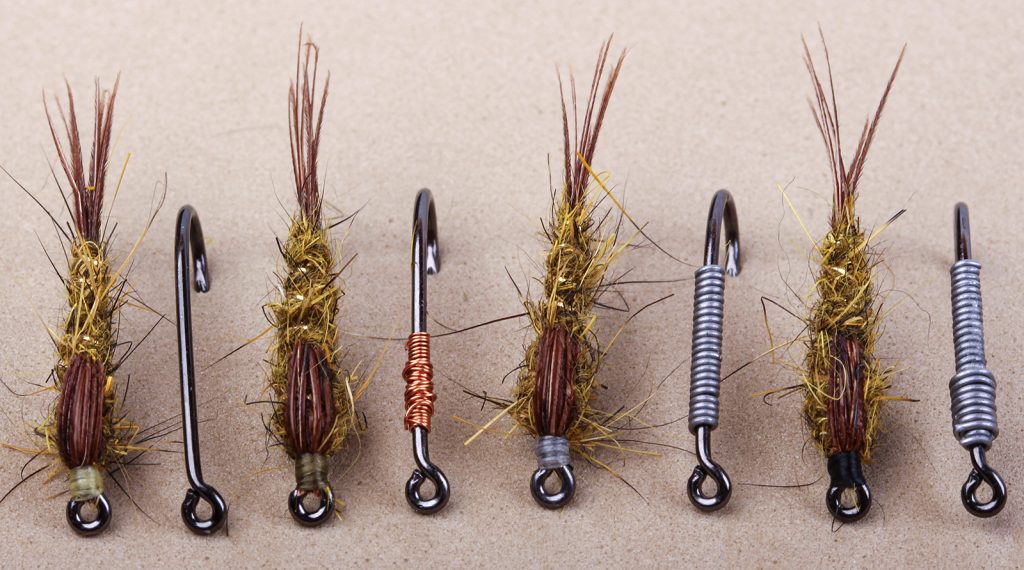
Another way to get the fly to sink to the right depth is to tie the smaller bushy so that the volume of the fly is reduced. A brushed body, a hackle and a few extra tail fibers significantly affect the fly’s ability to sink through the water layers.
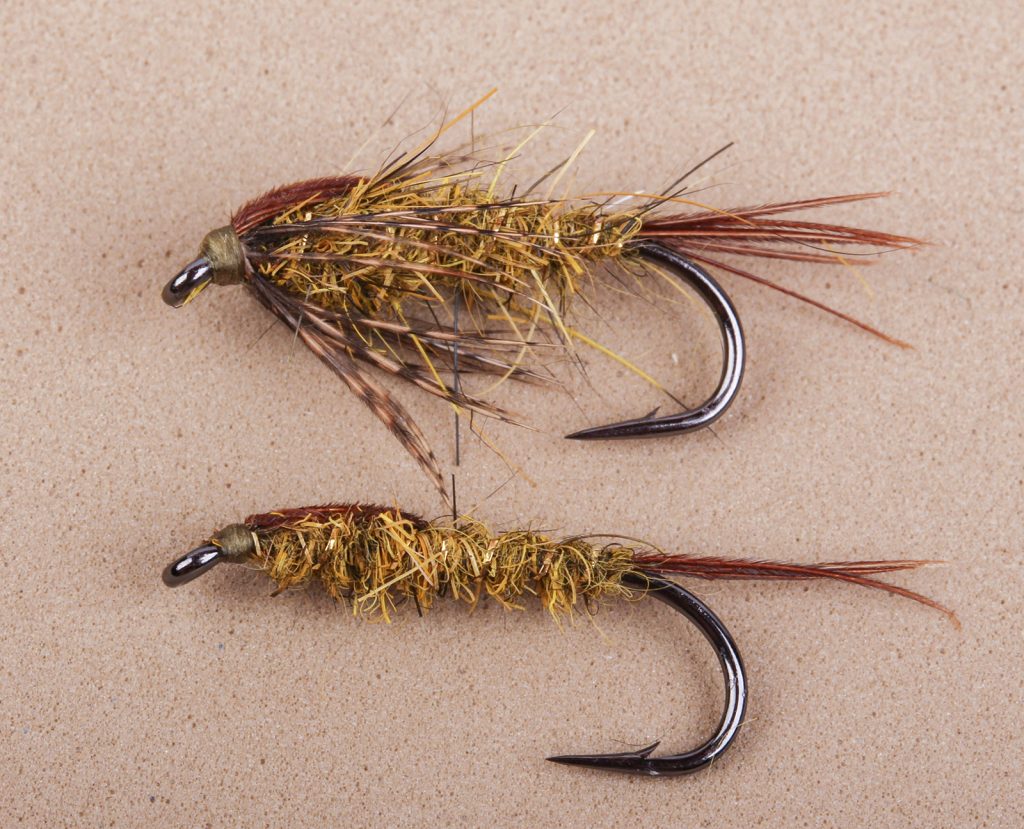
You can also vary how the flies sink and get different properties on the same fly by tying it on different hooks. One of my favorites for rainbow trout is a simple softhackle fly. I use it often, but would like to be able to vary how I fish it, and especially how far below the surface it fishes.
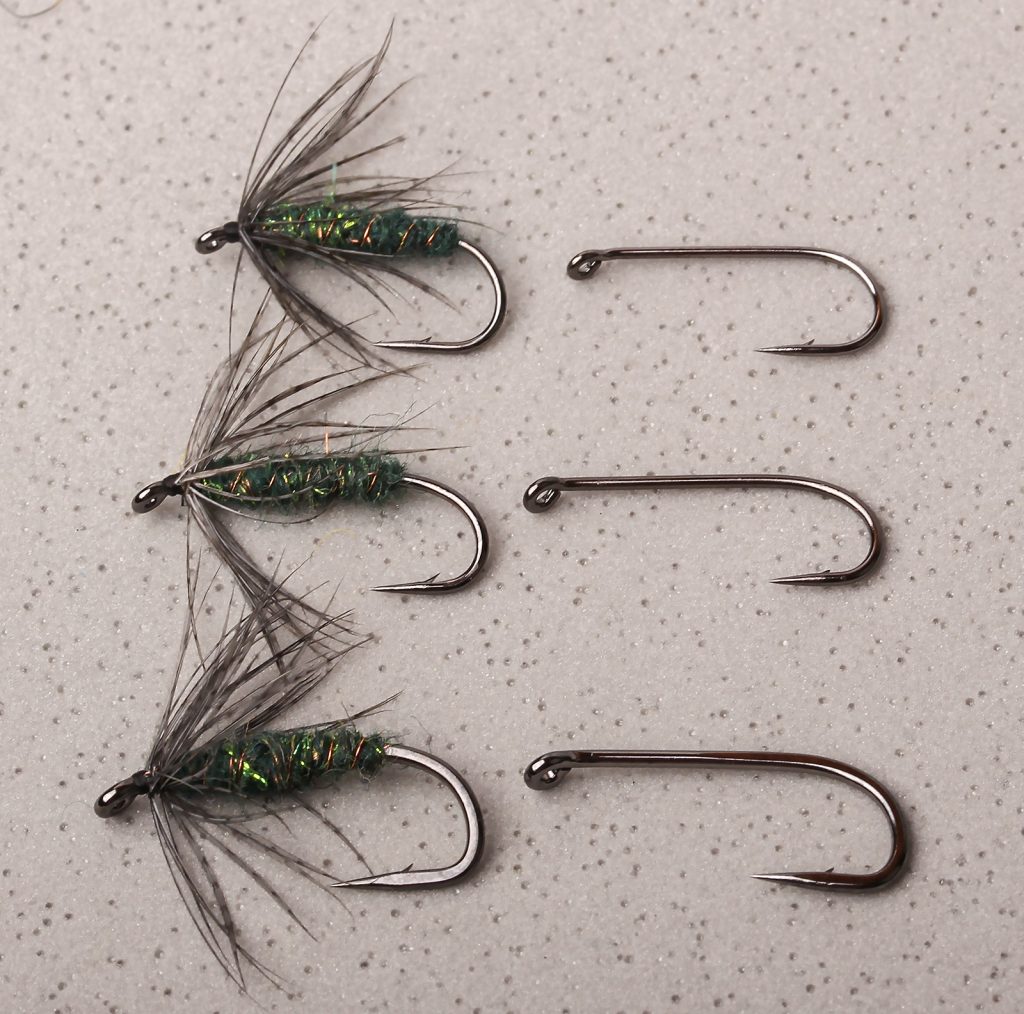
For most fishing I tie it to a dry fly hook, here an Ahrex FW500 Dry Fly Traditional size 10. It goes right under or on the surface, which is effective when the fish are searching for emergences and insects on the surface. If there are fewer hatches and not much activity on the surface, I use the same fly tied on a nymph hook, here an Ahrex FW560 Nymph Traditional size 10. Then the fly quickly breaks the surface and fishes just below, something that is important if the water surface is completely calm. I don’t want the fly to strip the surface and scare shy fish. At last I have a third variant, tied to a hook model with coarser wire. In this case, I have used the Ahrex NS115 Deep Streamer size 8, which is a really good hook for nymphs and wet flies. I use it when I want to fish the fly a little deeper, but also at times when the fish moves on the surface and picks small stuff. In this case the heavier fly can attract the fish with a ”pop”, as it will be when the heavy fly lands.
Tight lines and happy tying
Håkan Karsnäser
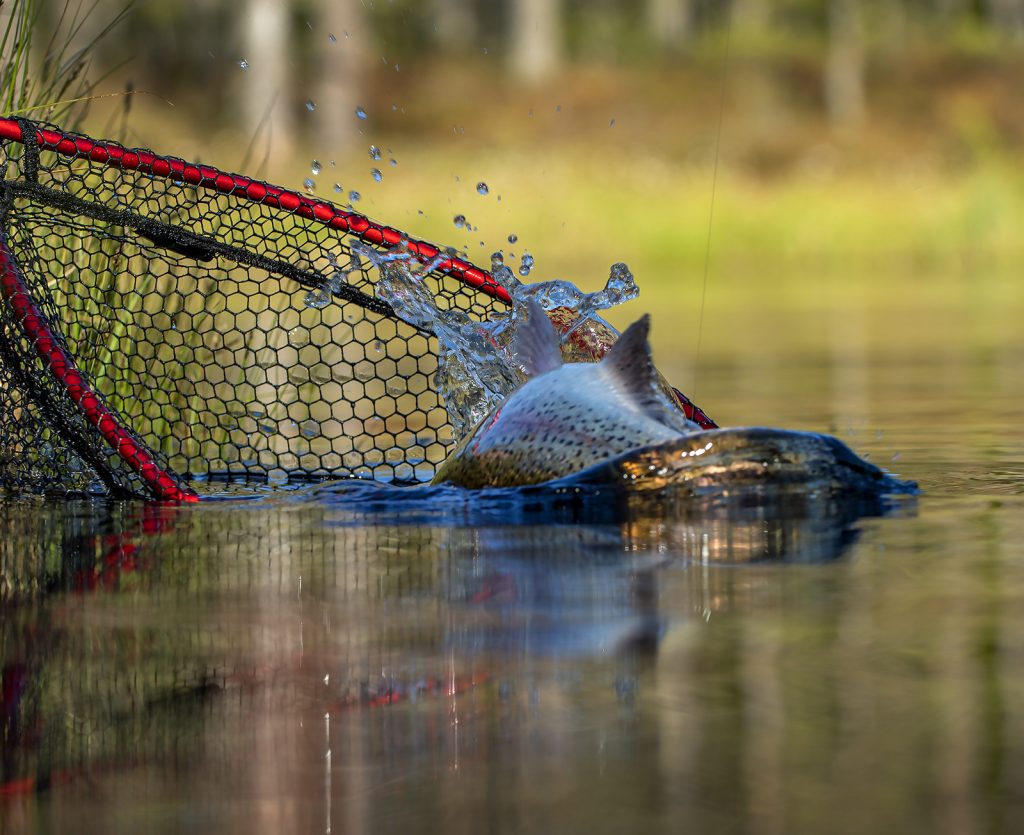
Here is an exampel on Håkan tying a simple yet effective weighted nymph for fishing the the fly up-side-down in deepest spots of the water – in this case a jig-styled nymph .
